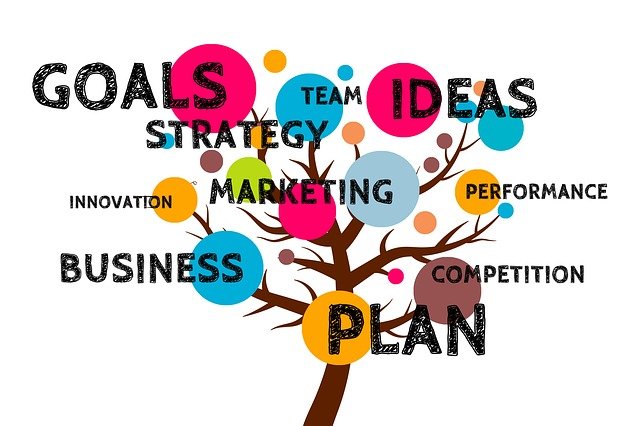Once an organization reaches a size of 25 people or more, the need to establish teams arises. Teams focus on specific areas of the company and strive to meet predetermined goals. Team members must collaborate with one another and learn to use their creativity and conflict resolution skills to meet business objectives.
Adopting an appropriate team structure is essential for aligning the team with the organization’s goals. Oftentimes, management determines the team structure after considering the needs of the business and how the team can best coordinate to meet them.

What Are the Stages of Team Development?
There are four stages of team development as identified by Bruce Tuckman (a behavioral psychologist) in 1965. The stages include forming, storming, norming, and performing.
 First stage: Forming
First stage: Forming
1. Forming
During the forming stage of team development, management identifies the roles of each individual in the team. As new people come on board, they seek to be on their best behavior. Everyone puts forth their best efforts while being courteous to one another.
The forming stage doesn’t affect the organization’s overall performance much. Everyone is too new to their positions to make a dent in the long-term strategy. In the forming stage, management needs to convey the goals of the team and set down any rules for accomplishing them.
 Second stage: Storming
Second stage: Storming
2. Storming
Once the team has gotten to know one another and feel more comfortable, the storming stage begins. At this time, personal and work-related conflicts may become known. People are more likely to argue with one another and play the blame game when issues arise.
While storming is difficult for the team and can lead to many conflicts, it’s an essential stage to go through. Managers should seek to reduce conflicts and face them head-on when necessary to keep the problems from becoming even more significant.
Helping the team through the storming stage is vital. Management can do so by encouraging employees to focus on their tasks and guiding them on the organization’s overall objectives. Third stage: Norming
Third stage: Norming
3. Norming
During the norming stage, conflicts become less frequent. There are fewer arguments among team members, and everyone begins to settle into their routines. Certain employees will be recognized for their efforts and contributions, and these people will become the go-to people on the team.
In some cases, teams will alternate between the storming and norming phases. Alternating is entirely normal and helps to develop conflict resolution skills between employees. When the group reaches the norming stage, management should seek to encourage stability among employees while pushing organizational goals. Fourth stage: Performing
Fourth stage: Performing
4. Performing
The final stage of team development is performing. Once the group has reached the performing stage, they’ve worked through their conflicts and can focus on the company’s goals. The team has the knowledge necessary to carry out their tasks and is less focused on differences with other team members.
The performing stage is where managers can tap into their worker’s creativity and innovation skills to really make a mark on the company. Managers should seek to keep the team in the performing stage as long as possible to achieve even greater productivity and results.
What Are the Characteristics of a High-Performing Team?
High-performing teams don’t appear overnight. They take time to develop, and management will need to consistently work with their employees to create a collaborative team.
Here are a few characteristics of teams that perform well together.
 A team performing well...and having fun!
A team performing well...and having fun!
Clearly Defined Roles and Responsibilities
When a team knows how they fit into the company, they understand what management expects of them. Defining each employee’s role within the organizational chart and the team is crucial. Doing so allows workers to know where their responsibilities end and their colleagues’ begin.
Understanding of Company Goals
It’s possible for an employee to know the responsibility of their role but not understand the organization’s goals. Management must ensure all employees are familiar with the objectives the company seeks to achieve. The best way to do this is by describing how an employee’s performance affects the company's goals.
Regular Collaboration and a Sense of Belonging
Early in the team development cycle, employees aren’t likely to collaborate as effectively as they do once they become comfortable with their colleagues. Management can encourage effective relationship development through regular activities with coworkers, like company lunches and other endeavors.
Development of Trust and Respect
Over time, coworkers will begin to recognize their colleagues for the individual talents they bring to the team. With time comes the development of trust. Once trust is present, collaboration becomes much more manageable. People become willing to take risks and share their ideas. There is less competition and more cooperation.
Continuous Learning
An atmosphere of continuous learning fosters innovation and productivity. While people constantly learn new skills through their responsibilities, sometimes learning is stifled once they become comfortable. Pushing people toward expanding their knowledge isn’t just a positive for the individual worker — it’s also helpful for encouraging change.
Structuring Your Team
Developing a high-performing team takes time. However, with suitable structures in place, it’s possible to form a group of individuals who collaborate well and trust one another.
Managers should remember that every team will go through a development phase where they perfect their conflict resolution skills and learn to respect one another for their unique talents.
Functionly offers organizational structure and strategy resources designed to enhance your team's performance and encourage productivity and collaboration. Learn more about our solutions today.





